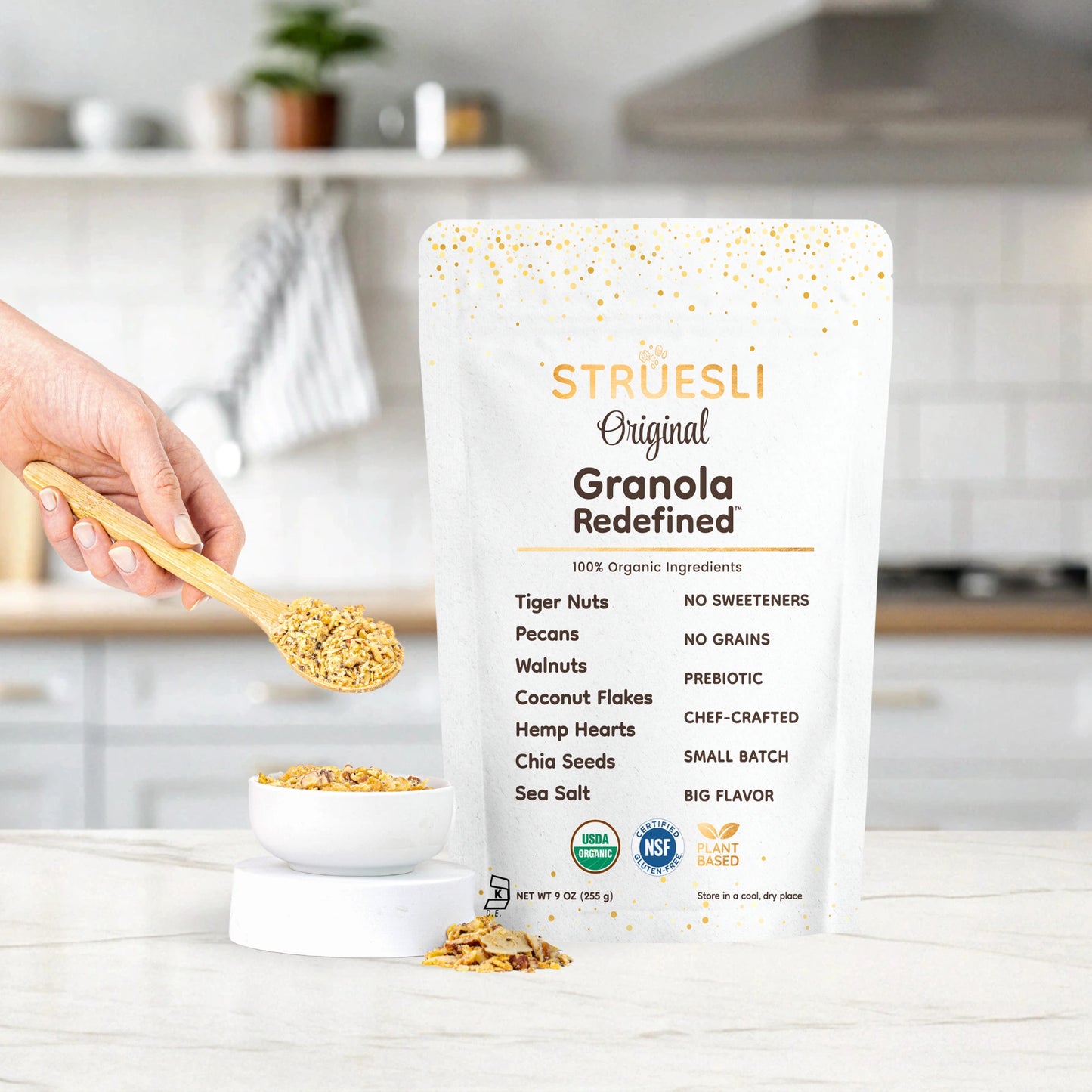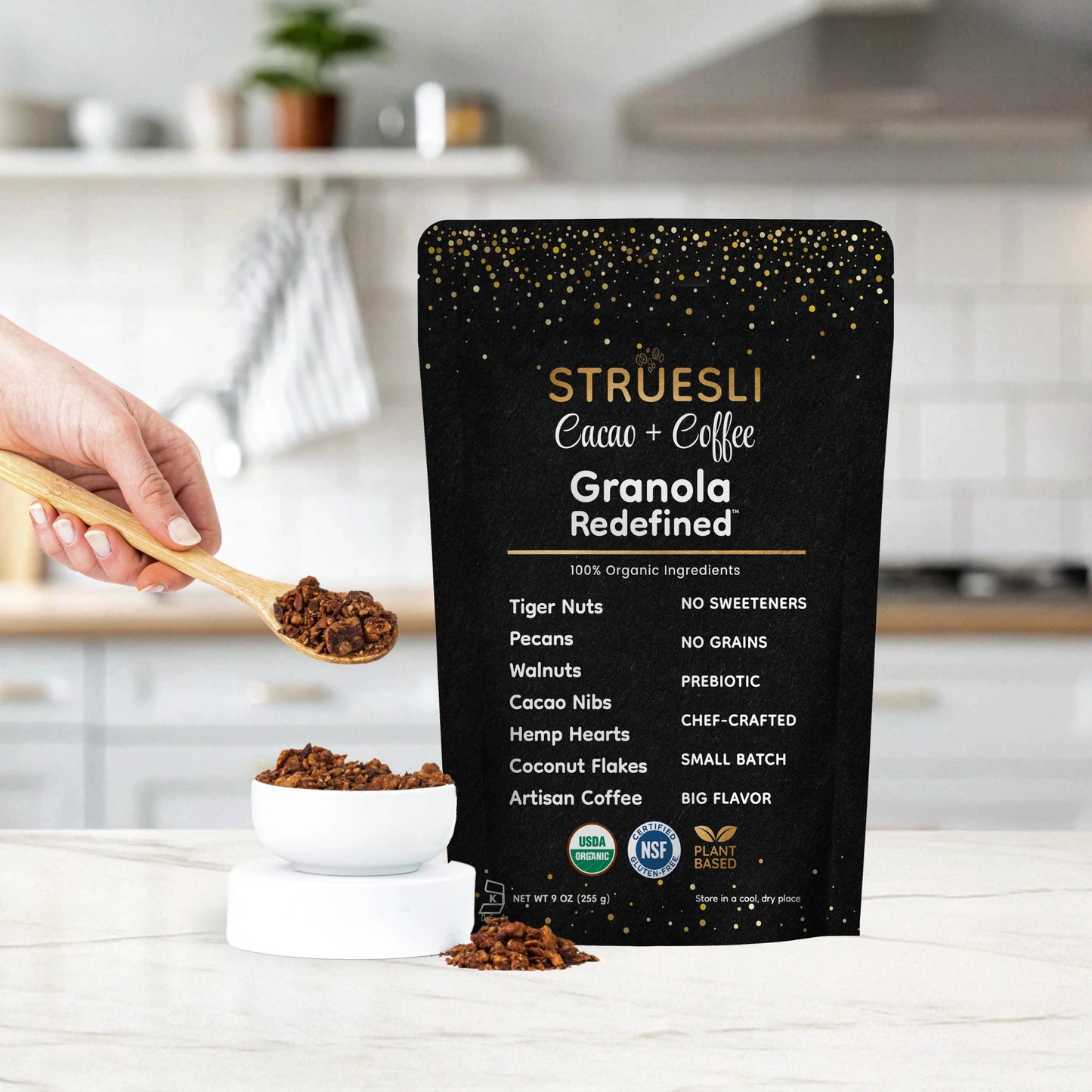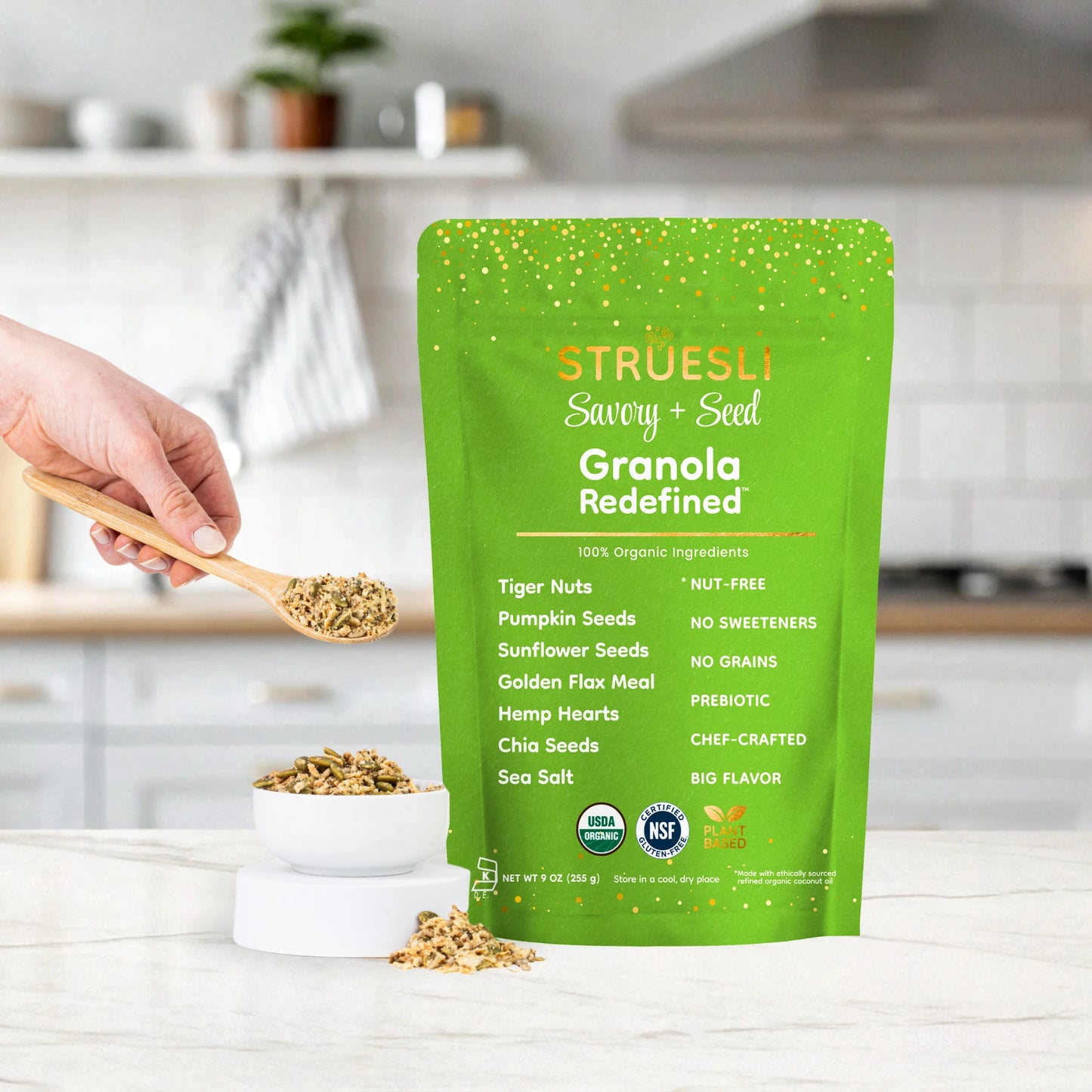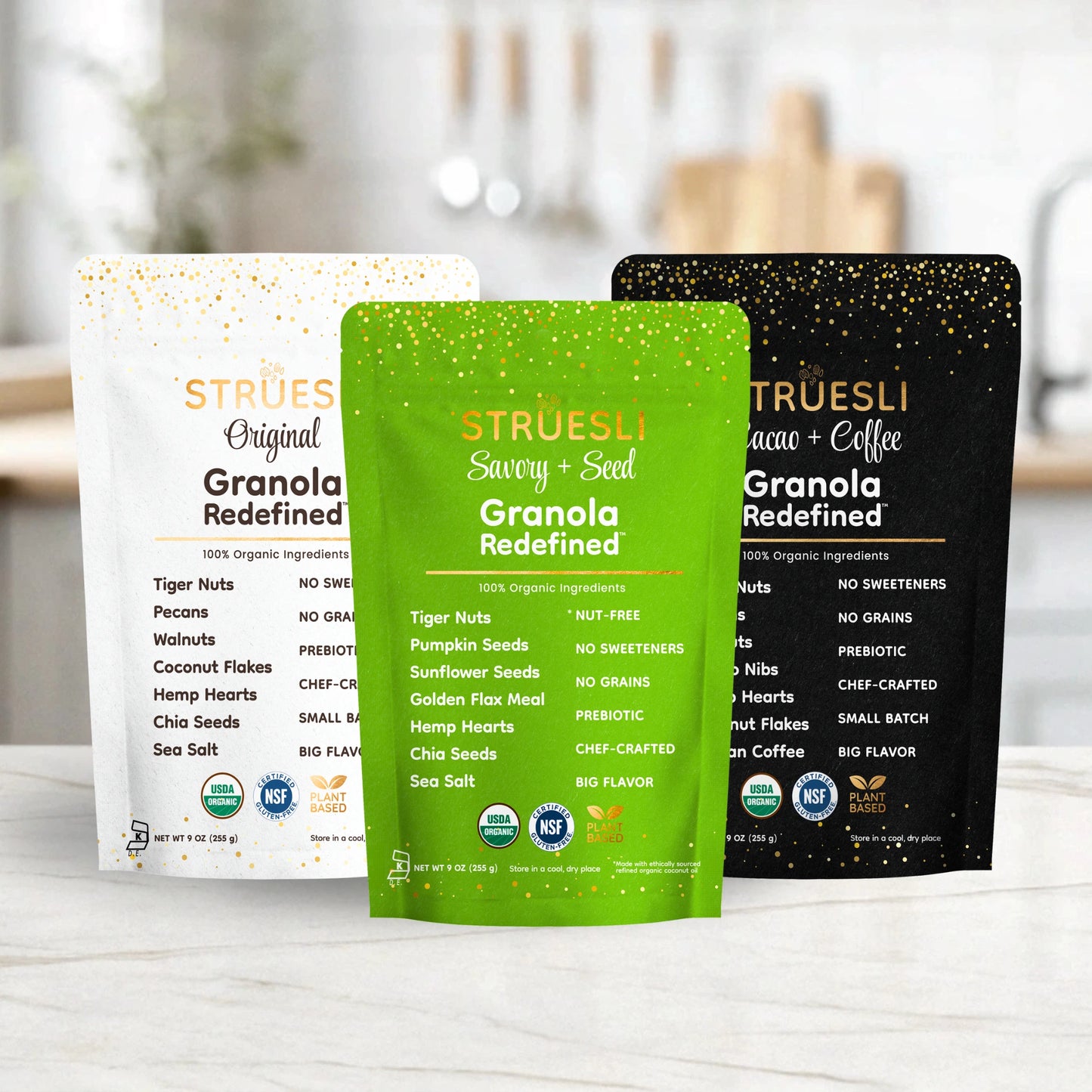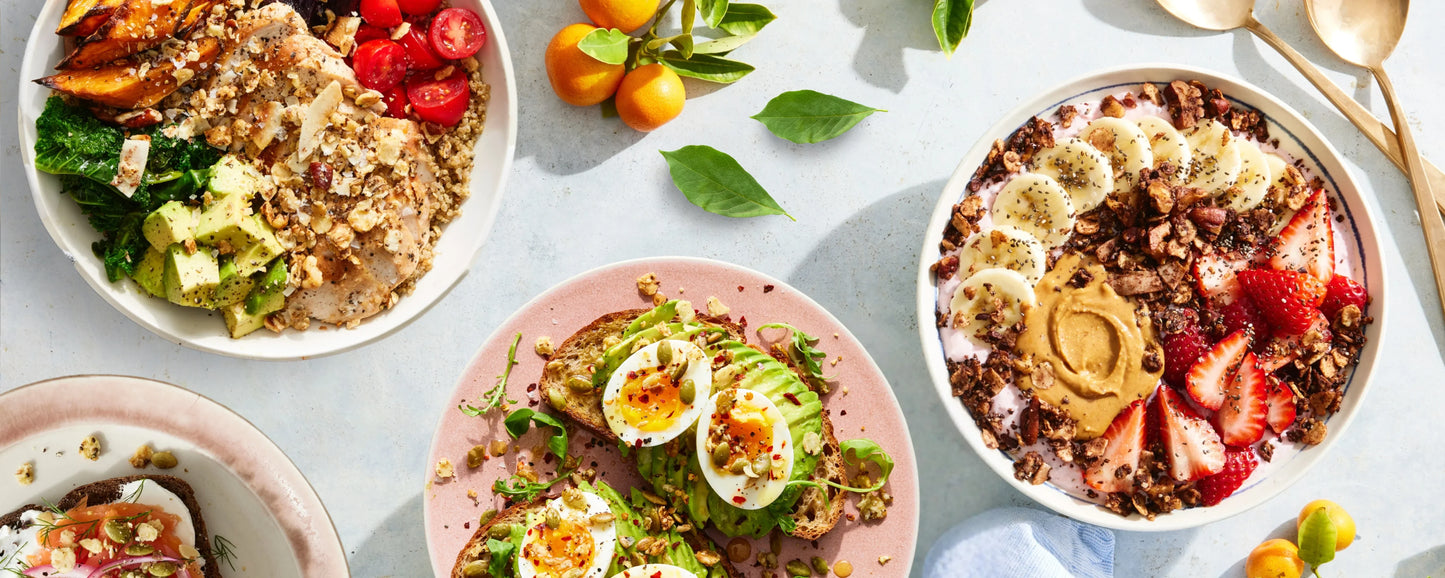
GLP-1 weight-loss medications – including name brands like Ozempic, Victoza, Wegovy, Trulicity, and Byetta – have been around for many decades, but they're more popular now than ever. These medications are called GLP-1s (or glucagon-like peptide 1) because they mimic our body’s natural GLP-1 hormone, which plays a key role in blood sugar management and appetite. In the past, they’ve been prescribed primarily to treat people with type 2 diabetes, but they’re now being used by a wider range of people for general weight loss, but also migraine and hormone management in some cases.
With more people than ever having access to Ozempic and similar GLP-1 medications, some even buying them online, there’s a lot of interest in how and what to eat when on a GLP-1 medication. Unfortunately, many people who have started a GLP-1 injection don’t get much professional advice about what to eat in order to stay healthy and fuel their bodies well. In this article, we’ll share the best and worst breakfast choices for someone on Ozempic.
What Ozempic Does
Ozempic and other GLP-1s mimic a hormone that suppresses your appetite, making you feel more full from less food. It also delays stomach emptying into the intestines, which makes you feel less hungry and reduces food cravings, suppressing the signal to eat more. It can also cause nausea, vomiting, diarrhea, stomach pain, constipation, and/or anxiety and mood changes. These side effects are a price Ozempic takers are willing to pay – and with smart food choices, they can often be minimized or avoided.
 On Ozempic? Here’s What To Eat For Breakfast
On Ozempic? Here’s What To Eat For Breakfast
Similar to intermittent fasting, people on GLP-1s should aim to maximize nutrition at every meal, since eating instances and portions are often reduced due to lack of hunger. The best diet for people on GLP-1s is one that is built around whole and minimally processed foods while also being low in added sugars. Research shows that people who combine GLP-1s with healthy eating have more long-term success with weight loss and fewer complications and side effects.
Starting the day with optimal nutrition is a great way to fuel the day’s activity while also maintaining positive mental health. Breakfasts should be a good source of fiber and protein while being low in saturated fat. Foods that contain good-for-you unsaturated fats, however, may actually increase GLP-1 secretion, making the medication more effective.
- Fiber foods: Breakfast foods that contain nuts, seeds, whole grains, berries, or avocado are all breakfast foods with good sources of fiber.
- Protein foods: Options like eggs, breakfast meats, Greek yogurt, protein smoothies, salmon, beans, nuts, seeds, cottage cheese, and whole grains are all ways to get protein at breakfast.
- Healthy fat foods: Nuts and nut butters, seeds, avocado, olive oil, salmon, cottage cheese, and eggs are all foods that provide a healthful fat profile.
 Build a breakfast plate that combines all of these important nutrients to feel your best and have long-term weight management success with GLP-1s. Struesli Original grain-free granola has 5 grams of fiber, plant-based protein, and healthy fats in every ¼ cup serving - plus zero added sugars. Here are some examples of how to use Struesli to create a nutritious and delicious breakfast for someone on GLP-1 medication:
Build a breakfast plate that combines all of these important nutrients to feel your best and have long-term weight management success with GLP-1s. Struesli Original grain-free granola has 5 grams of fiber, plant-based protein, and healthy fats in every ¼ cup serving - plus zero added sugars. Here are some examples of how to use Struesli to create a nutritious and delicious breakfast for someone on GLP-1 medication:
- Greek yogurt + berries + Struesli Grain-Free Granola
- Smoothie made with fruit + Greek yogurt + protein powder + Struesli Grain-Free Granola
- Oatmeal + nut butter + Struesli Grain-Free Granola
- Whole grain toast + cottage cheese + Struesli Grain-Free Granola
Breakfast Recipes To Try
- Fancy Avocado Toast Recipe
- Savory Yogurt Bowl With Granola
- The Adrienne Special
- Fruity Protein Yogurt Bowl
- Struesli Nut Butter Toast
Foods To Avoid
It’s smart to avoid high-sugar diets so you can avoid rapid rises in blood sugar (blood sugar spikes) when taking GLP-1s. Therefore, a few foods to avoid or limit are
- Sugary foods, including nutrient-poor sweets, candies, and ice cream
- High-sugar drinks, including soda and fruit juices
- Alcohol
- Low-fiber refined grain foods, including white bread and pasta
- Foods high in saturated fats, including fried foods, extra fatty meats, and breakfasts high in butter and cream
Written by Jessie Shafer, RD
Updated May 15, 2025

